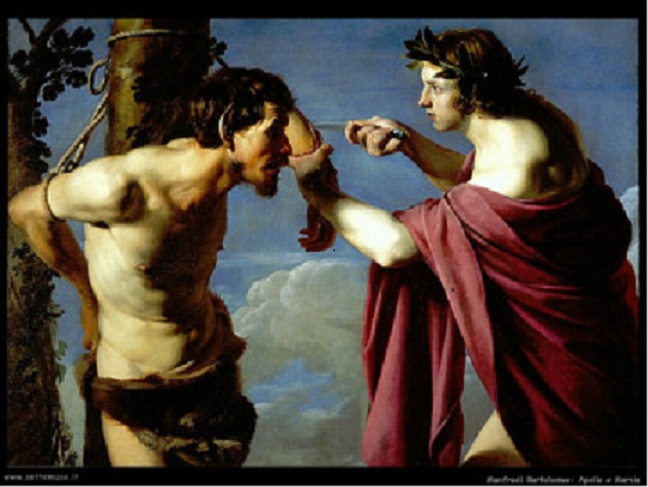La bellezza nel segno del rifiuto
DOI:
https://doi.org/10.13130/2240-9599/8697Abstract
Beauty and its refusal are not merely a cipher of contemporaneity but a topic discussed since antiquity. The rivalry between lyre and flute, between harmony, mathematically determinable, and melody, gatherable only by hearing, arises from the myth, from the fight between Apollo and Marsia, where Greece and Phrygia, Europe and Asia are opposed in a civilisations collision. In modernity this collision arose again as political, whereas the egalitarian melody is opposed to the elitist harmony. Into this collision we find fine arts, not beauty anymore: fine arts leave the territory of beaux arts of fine poetry but remain, for contemporaneity, works of art. But what do arts, not beauty anymore, or even ugly, want? Which aim do they pursue? How can we judge them?Riferimenti bibliografici
Apuleio, Florida, tr. it. di G. Augello, in L’apologia o la magia e Florida, Torino, UTET, 1984.
Gombrich E.H., 1978: Kunst und Fortschritt. Wirkung und Wandlung einer Idee, Köln, DuMont, 1978.
Gülke P. (a cura di), 1989: Jean Jacques Rousseau. Musik und Sprache, Leipzig, Reclam, 1989.
Hay W., 1754: Deformity. An essay, London, R. and J. Dodsley, 1989.
Herder J.G., 1955: Kalligone (1800), Weimar, Bohlau, 1955.
Jauß H.R. et al. (a cura di), 1968: Die nicht mehr schönen Künste. Grenzphänomene des Ästhetischen (Poetik und Hermeneutik), München, Fink, 1968.
Kant I., Anth: Anthropologie in pragmatischer Hinsicht, in Kants Gesammelte Schriften, Bd. 7, hrsg. von der königlich Preußischen Akademie der Wissenschaften, Berlin, Reimer, 1917.
Kant I., KU: I. Kant, Kritik der Urteilskraft, in Kants Gesammelte Schriften, Bd. 5, hrsg. von der königlich Preußischen Akademie der Wissenschaften, Berlin, Reimer, 1913.
Kemp W., 1974: Disegno. Beiträge zur Geschichte des Begriffs zwischen 1547 und 1607, «Marburger Jahrbuch für Kunstwissenschaft» 19, pp. 219-240.
Kielmansegg P.G., 2016: Repräsentation und Partizipation. Überlegungen zur Zukunft der repräsentativen Demokratie, Stuttgart, Steiner, 2016.
Marano K., 1998: Apoll und Marsyas. Ikonologische Studien zu einem Mythos in der italienischen Renaissance, Frankfurt a.M., Lang, 1998.
Mattheson J., 1995: Der vollkommene Capellmeister (1739), hrsg. von M. Reimann, Kassel, Bärenreiter, 1995.
Mörike E., 1999: A una lampada, in Poesie, tr. it. di E. De Angelis e L. Cutino, Pisa, Jacques e i suoi quaderni, 1999.
Motte D. de la, 1993: Melodie, München, Dtv, 1993.
Motte D. de la, 2014: Harmonielehre, Kassel, Bärenreiter, 2014.
Nicklaus H.G., 2015: Weltsprache Musik. Rousseau und der Triumph der Melodie über die Harmonie, München, Fink, 2015.
Platone, Politeia, in Tutti gli scritti, a cura di G. Reale, Milano, Bompiani, 2000.
Rameau J.-P., 1750: Démonstration du principe de l´harmonie servant de base à tout l´art musical théoretique et pratique, Paris, Durand-Pissot, 1750.
Rousseau J.J., 1995: Écrits sur la musique, la langue et le théâtre (1791), Paris, Gallimard, 1995.
Smith B.R., 1979: The contest of Apollo and Marsyas. Ideas about music in the Middle Ages, in D.L. Jeffrey (ed.), By things seen. Reference and recognition in Medieval thought, Ottawa, University of Ottawa Press, 1979, pp. 81-107.
Weis A., 1992: The hanging Marsyas and its copies. Roman innovations in a Hellenistic sculptural tradition, Roma, Archaeologica, 1992.
Winckelmann J.J., 2002: Kleine Schriften, hg. von W. Rehm, Berlin, De Gruyter, 2002.
Zanker P., 1988: Die Trunkene Alte. Das Lachen der Verhöhnten, Frankfurt a.M., Fischer, 1988.



